Yatsuhashi is the most famous traditional Japanese confectionery from Kyoto. Chewy, mochi-like wrappers are flavored with cinnamon and matcha then filled with sweet red bean paste. You can make this delicious treat at home with just a few simple ingredients.
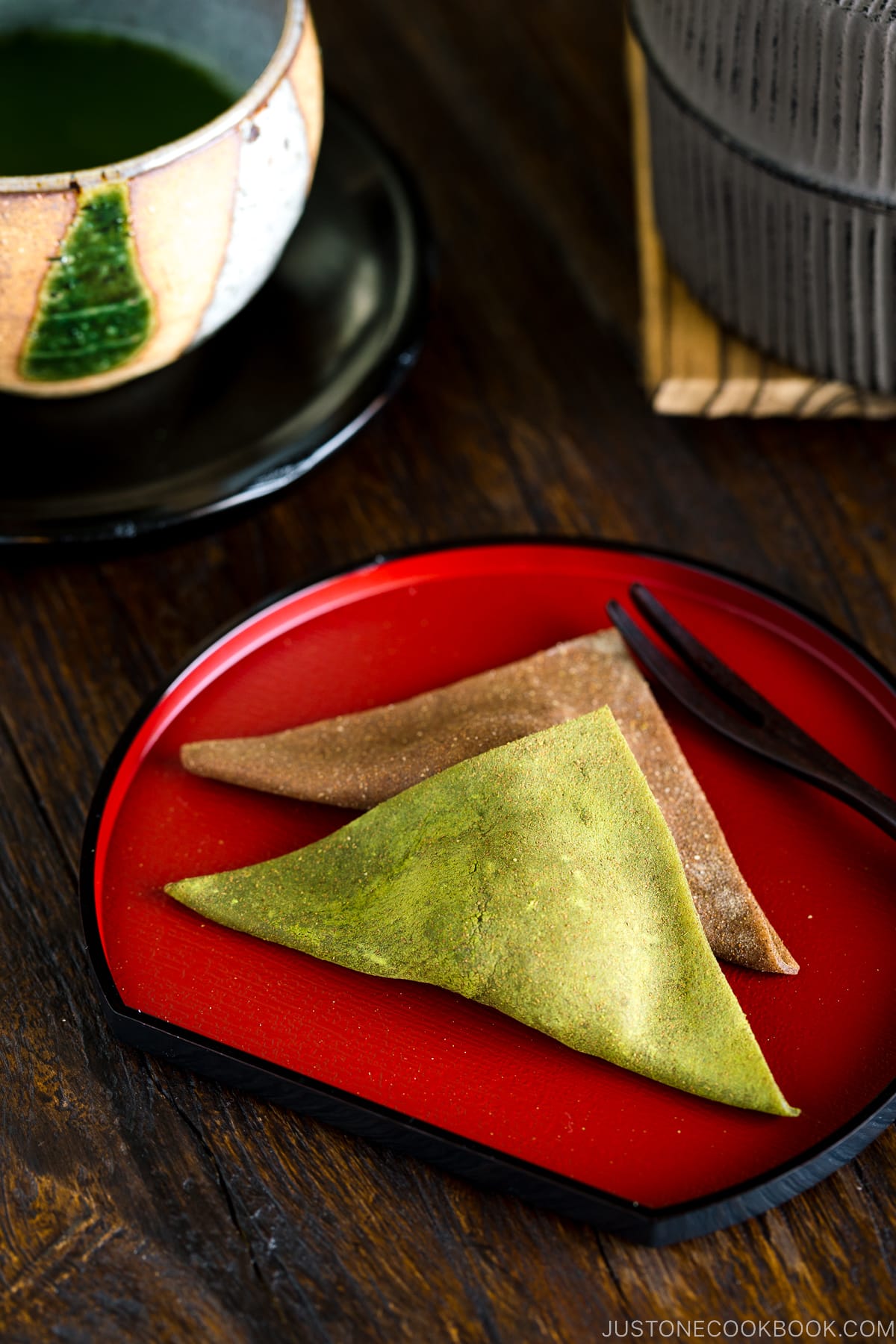
When you visit Kyoto (京都) – one of the most beautiful cities in Japan with ancient temples, gorgeous Japanese gardens, serene rock display, and fabulous food, you should also try its popular confectionery, Yatsuhashi (八ツ橋).
If you are not visiting Kyoto, no worries! I’m going to show you how to make it at home, so you can enjoy this delicious Japanese sweet without stepping foot in the city.
What Is Yatsuhashi?
Yatsuhashi (八ツ橋) is a Japanese confectionery that is made from rice flour, sugar, and cinnamon.
When you’re in Kyoto, you’ll notice every souvenir shop sells them. It’s probably the most famous regional product from Kyoto. Since it’s a very well-known gift from the city, you can purchase it even at international airports in Japan.
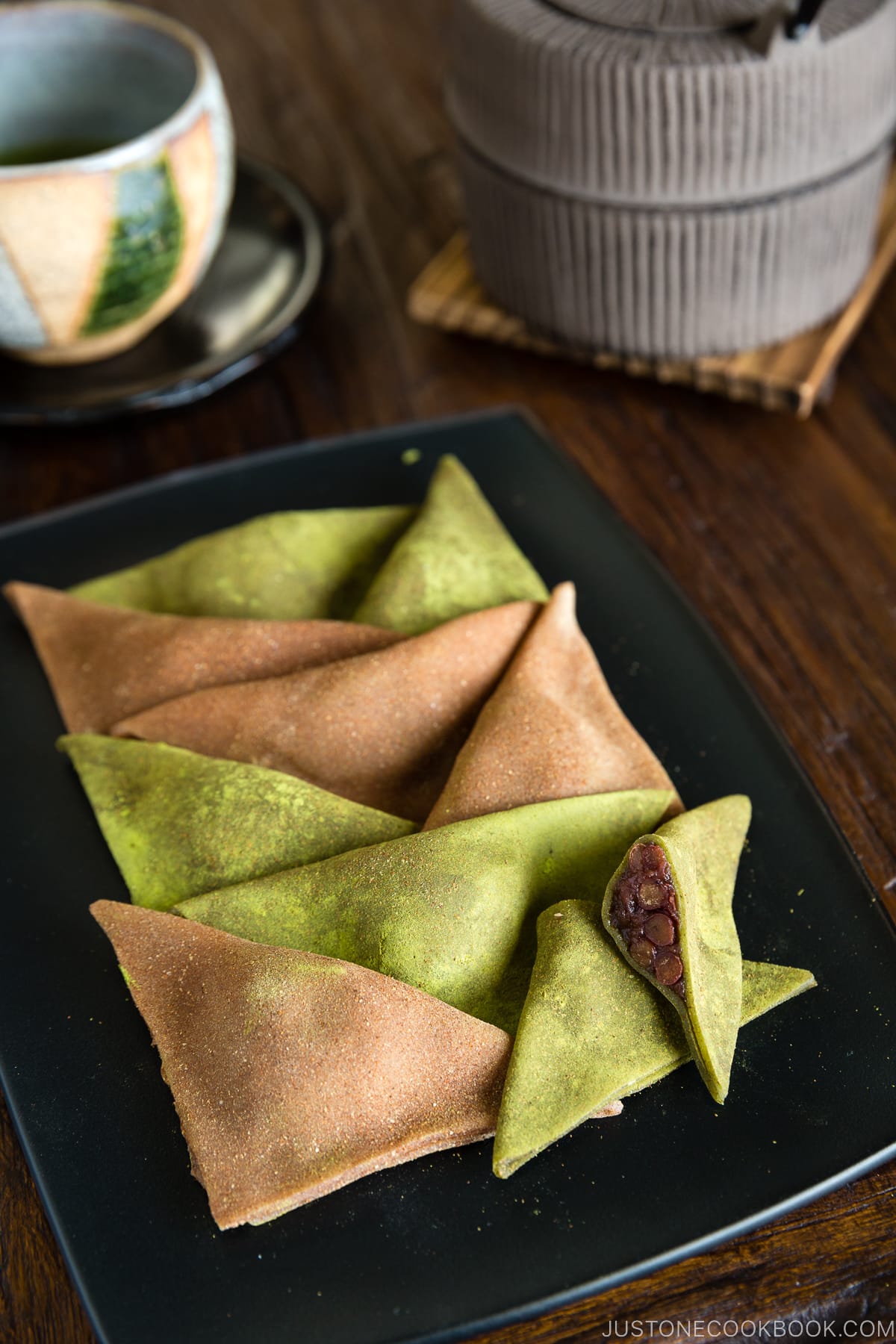
Yatsuhashi Three Ways
This traditional sweet is made in 3 different ways; baked, unbaked, and unbaked with Red Bean Paste.
When the mochi dough is flattened and baked until it gets hard, we simply call it Yatsuhashi. This is the most traditional type. The shape of the crackers is roundish and resembles a Japanese harp or a bamboo stalk cut in half lengthwise. The texture is very crispy and you may find it a bit hard to bite and break with your teeth. They usually come in cinnamon flavor, and you can smell and taste the intense cinnamon spice as you bite into the crackers.
The unbaked version is called Nama Yatsuhashi (生八ツ橋). The steamed mochi is rolled out and cut into a small rectangular shape, and it is enjoyed as is. There are different flavors for Nama Yatsuhashi. The most common ones are cinnamon and matcha (green tea powder) flavors.
Nama Yatsuhashi with Red Bean Paste (餡入り生八ツ橋) is the most popular kind these days. The square thin mochi is folded into a triangle and filled with red bean paste (tsubuan). Today I’m sharing this most popular recipe.
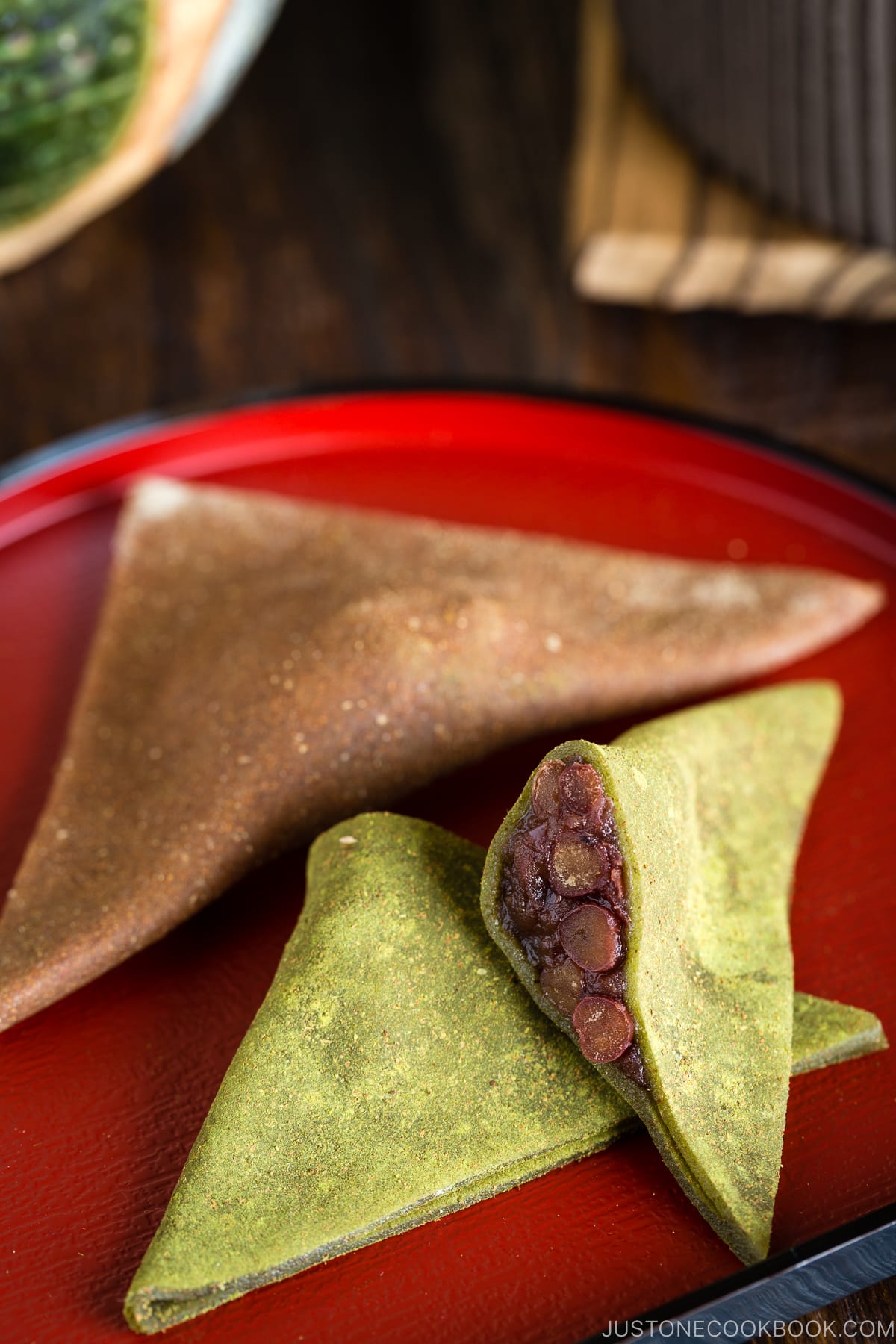
The Key Ingredients for Nama Yatsuhashi
The authentic version is made of 100% rice flour (米粉) – the flour made from short-grain Japanese rice (うるち米), not glutinous rice flour/sweet rice flour (もち米).
The majority of homemade Yatsuhashi recipes online require both Joshinko (上新粉) and Shiratamako (白玉粉).
Joshinko is a type of rice flour and its texture is very fine. When you cook it, it’s not as elastic/pliable as mochi made from glutinous rice flour. Shiratamako is a type of glutinous rice flour.
Depending on the recipe, the ratio between these two flours could vary, and a lot of people use more Shiratamako than Joshinko. However, I used more Joshinko in this recipe to keep it closer to the authentic Yatsuhashi taste with 100% rice flour.
Where to Find Joshinko and Shiratamako
Joshinko and Shiratamako can be found in Japanese grocery stores or on Amazon.
When you look for shiratamako at a Japanese grocery store, keep in mind that the texture of shiratamako is rather coarse, despite it being glutinous rice “flour”. Some pieces are as big as 1/8 inch (3 mm).
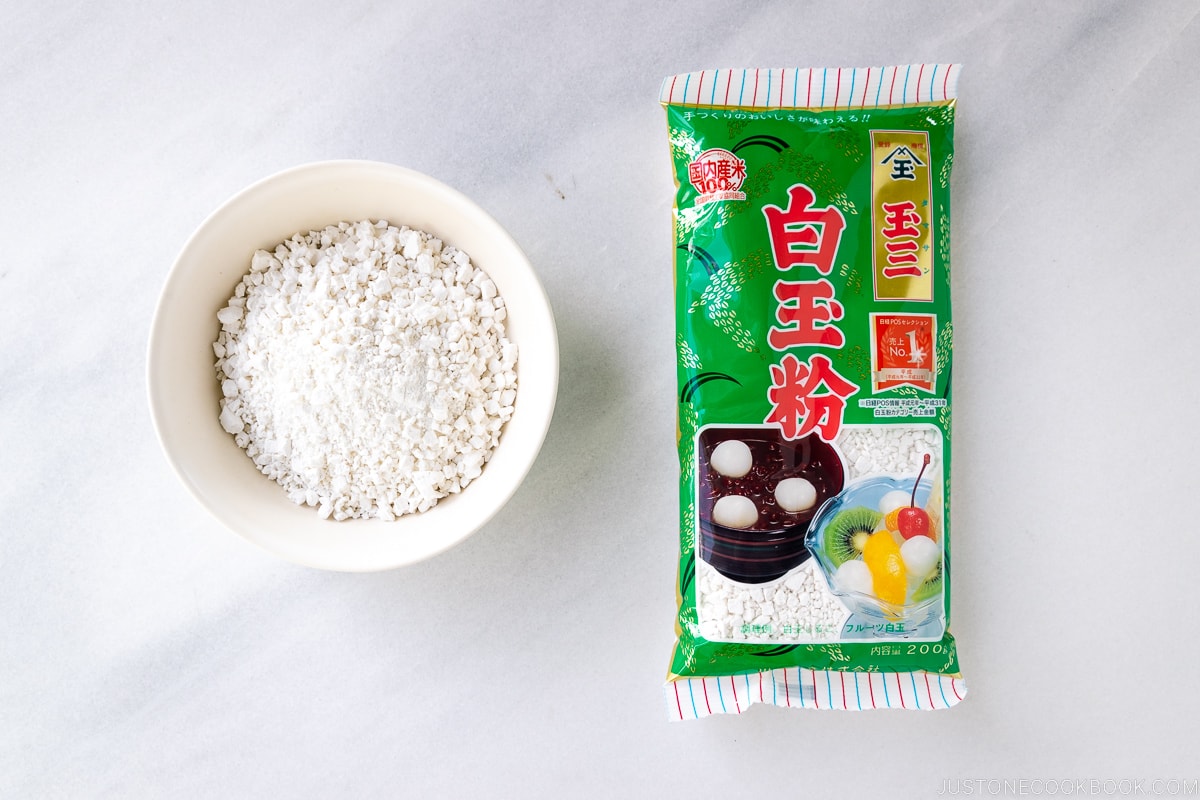
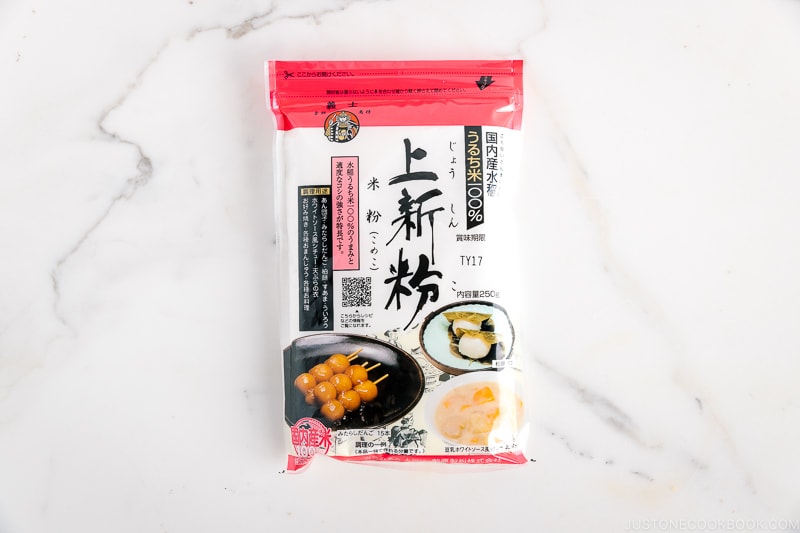
In Asian grocery stores, you can find other Asian rice flour and glutinous rice flour. However, they are not made from Japanese short-grain rice. I’ve heard from my readers that the taste and texture of the final dish are not the same.
If you cannot find Shiratamako, you can use another type of glutinous rice flour/sweet rice flour called Mochiko on Amazon or at some American grocery stores. However, please know that the result will not be the same.
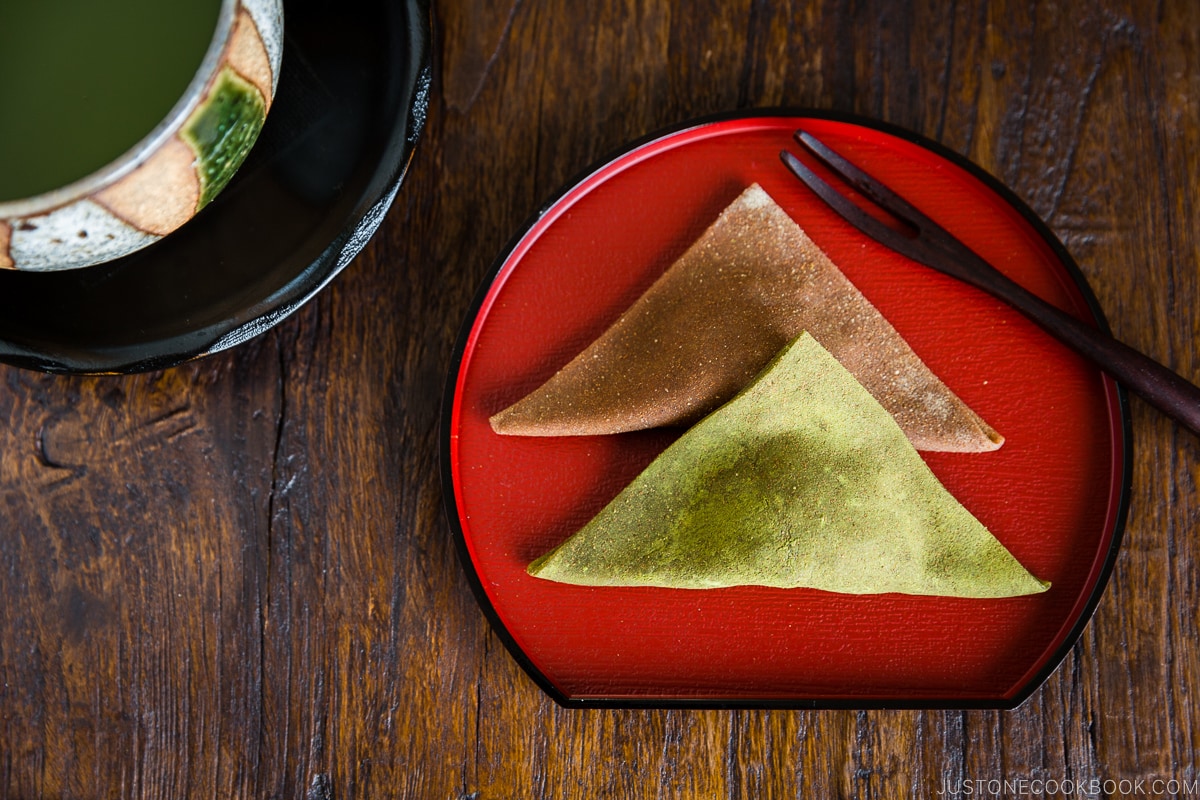
Wish to learn more about Japanese cooking? Sign up for our free newsletter to receive cooking tips & recipe updates! And stay in touch with me on Facebook, Pinterest, YouTube, and Instagram.
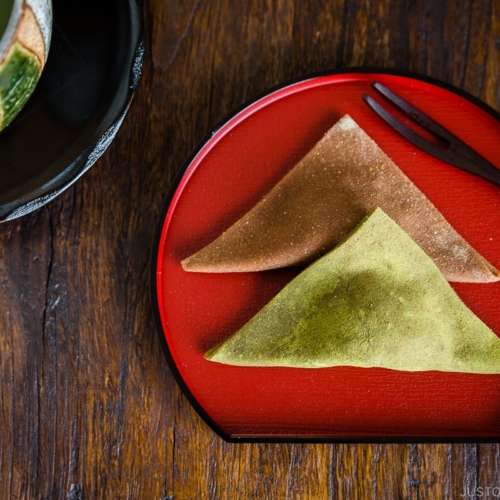
Yatsuhashi
Ingredients
- 30 g shiratamako (glutinous rice flour/sweet rice flour) or mochiko (scant ¼ cup)
- 65 ml water (¼ cup + 1 tsp)
- 60 g sugar (¼ cup + 2 tsp)
- 50 g joshinko (Japanese rice flour) (¼ cup + 2 tsp)
- 1 Tbsp kinako (roasted soybean flour)
- 2 tsp cinnamon powder
- 2 tsp matcha (green tea powder)
- 1 tsp cinnamon powder (to mix with the matcha)
- ⅔ cup sweet red bean paste (anko) (tsubuan chunky paste; you can make homemade Anko on the stovetop or in the pressure cooker)
Instructions
- Gather all the ingredients.

- In a large (microwave-safe) bowl, add 30 g shiratamako (glutinous rice flour/sweet rice flour) or mochiko (a scant ¼ cup) and 65 ml water (¼ cup + 1 tsp). Whisk well to combine so that there are no lumps of flour. We mix these two first before adding the rest of the dry ingredients.

- Add 60 g sugar (¼ cup + 2 tsp) and 50 g joshinko (Japanese rice flour) (¼ cup + 2 tsp). Mix well with a spatula. The sugar will make the dough watery. You should be able to see the bottom of the bowl for a second when you draw a line. Add more water to reach that consistency, if necessary.

To Cook the Dough in the Microwave (Method 1)
- Loosely cover the bowl with plastic wrap and put it in the microwave. My microwave is 1400W and strong, so I reduced the power to half (P5) and then microwave for 1½ minutes (if you microwave is 600W then you should heat it for 3 minutes). Take it out and mix evenly with a wet spatula. Cover with plastic wrap again and microwave for another 1 to 1½ minutes (adjust based on your microwave wattage).

- It’s ready once it becomes thick and sticky like soft mochi when you mix it with the wet spatula.

To Cook on the Stovetop (Method 2)
- Place a steamer rack inside a pot that is large enough to fit the bowl with the ingredients. Fill the bottom of the pot with water (but make sure the water won’t reach to bowl when boiling). Bring the water to a boil. Once boiling, place the bowl inside. Wrap the lid with a kitchen towel so that the condensation won’t drop into the mixture. Cover the lid and steam for 12–15 minutes or until the texture becomes like mochi—sticky, white, and thick when you mix with a wet spatula.

To Roll and Cut the Dough
- Spread some of the 1 Tbsp kinako (roasted soybean flour) on the work surface.

- Divide the dough in half. Keep one half in the bowl and cover with plastic wrap so it won’t dry out.

- With the other half of the dough, flatten it and sprinkle with 2 tsp cinnamon powder.

- Knead the dough to evenly distribute the cinnamon powder.

- With a rolling pin, roll out the dough to a thin sheet. Try to stretch it out into a rectangular (or square) shape, so it’ll be easier to cut into squares.

- Create a 3 x 3 inch (8 x 8 cm) square pattern with a piece of cardboard. Place it on the dough and cut out squares of dough with a knife. Sprinkle more soybean powder in between the wrappers so they don’t stick together.

- With the leftover pieces, knead and roll flat again to create more squares.

- Combine 2 tsp matcha (green tea powder) and 1 tsp cinnamon powder. Whisk well together.

- Flatten half of the dough that you kept in the bowl and sprinkle the matcha/cinnamon powder over the dough as you knead.

- With a rolling pin, roll out the dough to a thin rectangular sheet. Try to stretch it out into a rectangular or square shape, so it’ll be easier to cut into squares. Cut the dough into squares.

To Fold the Yatsuhashi
- With the ⅔ cup sweet red bean paste (anko), place 1 heaping teaspoon (15 g) of red bean paste in the center of each dough square.

- Fold in half diagonally into a triangle shape and press to seal the edges. If the dough edge won’t stick, wet it with water and press to seal. Enjoy within 24 hours.

To Store
- Just like other mochi desserts, Yatsuhashi will become hard and dry when it‘s stored in the refrigerator. Keep them in an airtight container and store at a cool room temperature.
To Make Baked Yatsuhashi
- Roll out the dough thinner and cut into strips ¾ x 2¼ inches (2 x 6 cm). Bake them at 300ºF (150ºC) for 15–20 minutes. If you prefer it to be more crispy, keep it in the oven a little longer. When they are crispy, remove them from the oven and let them cool.
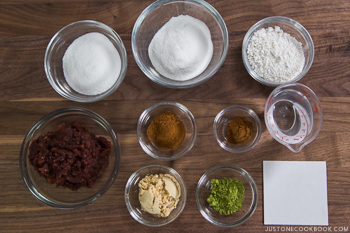
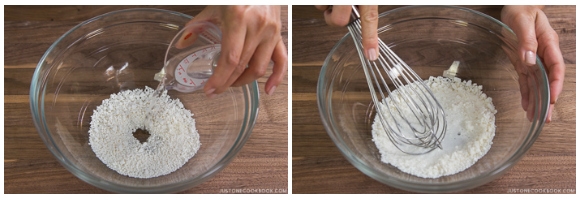
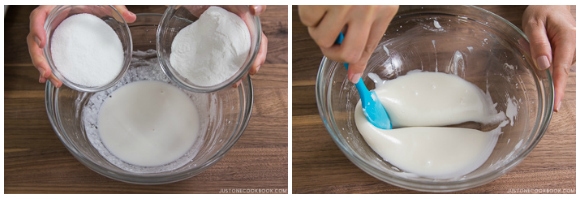
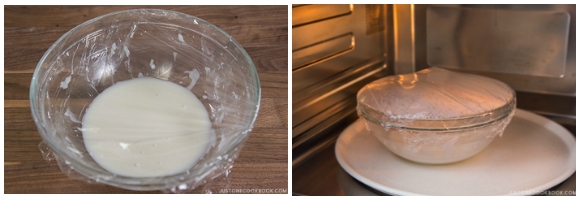
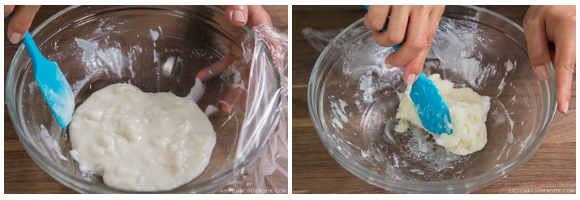
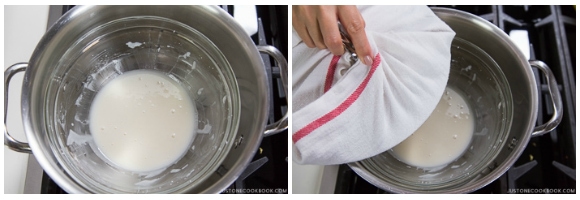
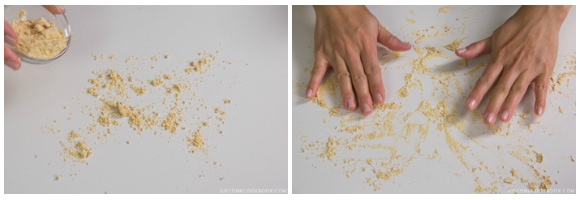
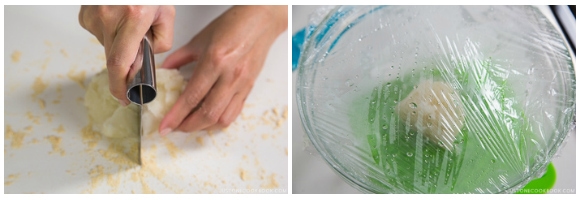
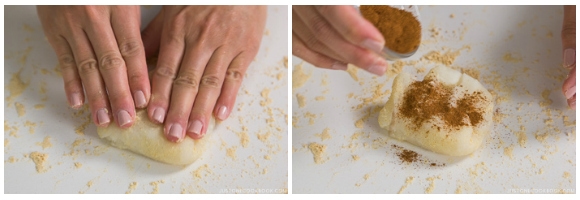
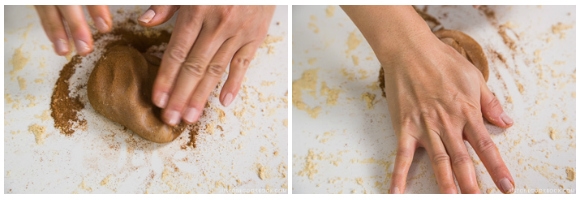
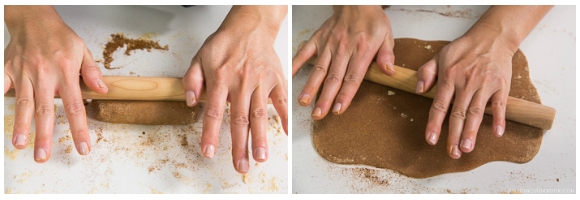
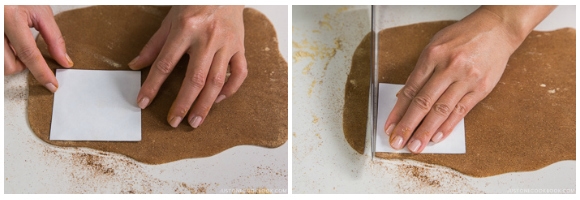
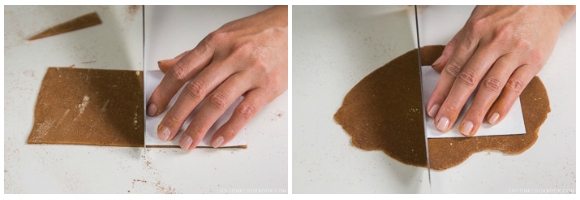
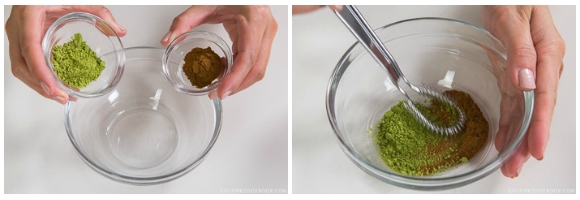
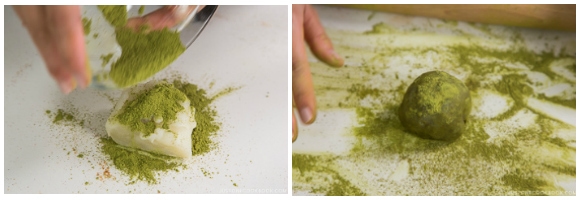
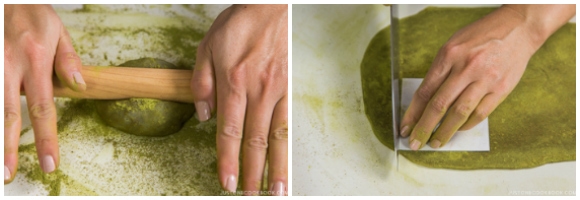
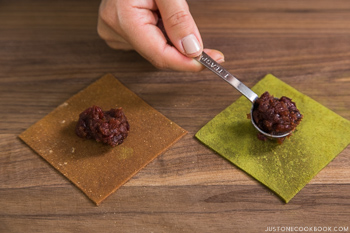
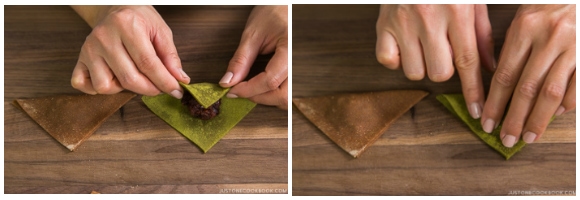

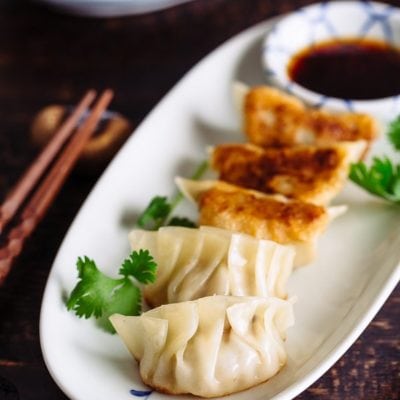
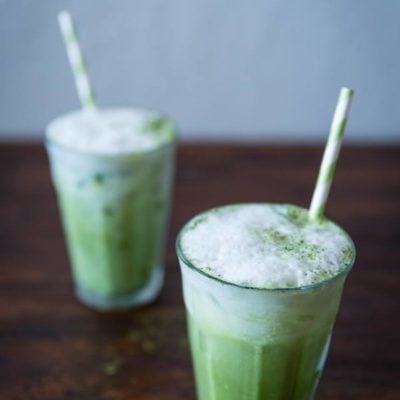

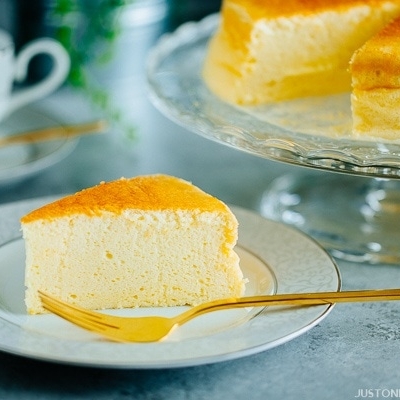
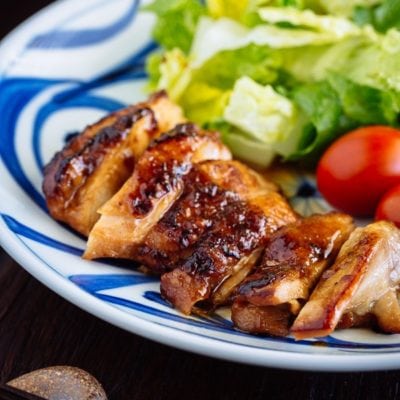
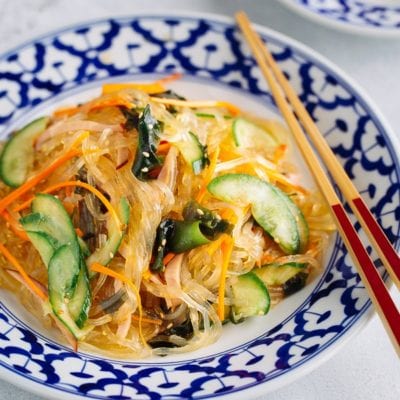

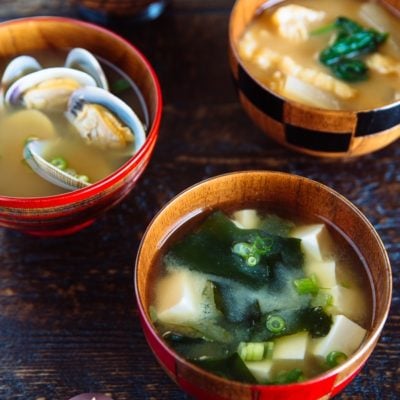

This is one of my most missed snacks from when I was in Japan. Thank you for sharing this recipe! I can’t wait to try making it! 🙂
Hi Amanda, Thank you for trying this recipe! We hope you enjoyed homemade Yatsuhashi!
Are the yatsuhashi also called otabe?
Hi Barbara! Yes, that’s the brand name. 🙂
It seems to be easy to prepare. Do you have an idea, how to bring it into the half-pipe-shape when you bake it_
Hi Peter! I haven’t tried it but how about baking it on the curved shape, like some kind of metal pipe?
This was delicious! Can we add less sugar if we think it’s too sweet? Would it still turn out alright? Thank you!
Hi Christy! Sugar keeps the mochi tender for a longer time. So adjust and see if cutting back sugar causes mochi to be tougher. 🙂
[…] Yatsuhashi – the most popular traditional Japanese sweet from Kyoto […]
[…] You love Yatsuhashi (八ツ橋) from Kyoto? Make it at home! Here’s the recipe. […]
hello! thank you for the recipe – I know it’s not traditional, but I was wondering what tweaks to make if I wanted to make a version with a black sesame filling?
Hi Dawn! Hmmm I’ve never made it but I would make a filling using Nerigoma (https://www.justonecookbook.com/how-to-make-black-sesame-paste/) and add. 🙂
Hello Nami,
You mentioned 2 TSP kinako, but I cannot see where you used it.
Hi Momo! I think I wrote 2 tsp. cinnamon powder. 🙂
I usualy pick up a box or two of Nama Yatsuhashi whenever I visit Kyoto to use as souvenirs. I love sampling the different flavors but need to make sure I’m get them home in time since it has such a short expiration date. Great to know I can make it at home and hopefully get a chance to try your recipe. Thanks for sharing.
Hi Kit! Right, it’s made fresh, so homemade version is also needed to be enjoyed soon. Though we can control when to make it, and it’s delicious to eat fresh. Hope you give it a try! 🙂
I tried this recipe yesterday to make baked Yatsuhashi.
It was very easy, till the moment I had to roll out the dough. It was extremly sticky. I just could not manage to roll it out without it sticking to the ground.
(I did use corn starch instead of Kinako, because Kinako is not available here.)
In the end I used so much of it that my Yatsuhashi pieces were completly white on one site 🙁
Did I maybe do something wrong with making the dough? Do you have a tip to handle the extremly sticky dough? Maybe use something else than Kinako?
(I did microwave the dough for 2min, when it got out it was warm and sticky but also a bit hard)
And another question; is it normal for the baked Yatsuhashi to stay even and not end up half bent? (I hope you can understand what I mean)
I hope you can help. (btw they taste yummy)
Hi Melanie! Sorry for my late response! I’m happy to hear you tried this recipe already. Here are my answers:
1) What type of flour did you use? Have you found both rice flour and glutinous rice flour? Depending on it, the texture is slightly different. Without kinako or corn starch, mochi will be sticky but you have to make sure it’s evenly, thinly spread out, and make sure to sprinkle on the rolling pin too.
2) You could use cinnamon instead of corn starch. If you use my recipe with more rice flour % than glutinous rice flour, the mixture is harder than one with 100% glutinous rice flour, for example. But it’s pliable enough to spread/roll out.
3) It curls up naturally, maybe rotating the baking sheet to evenly distribute the heat might help?
Hello
Thank you for your answer.
1) I was able to buy some Shiratamako and Joshinko a while ago online. I did use them for the recipe so this should be ok.
Even with the corn starch it was extremly sticky 🙁
Maybe I should try to change the time in the microwave?
Our microwave does not tell me the Watt, it only says “defrost”, “slight heat”, “medium heat” and so on.
2) I will try changing the amount of rice flour and glutinous rice flour 🙂
3) That is strange, not a single one of my Yatsuhashi pieces curled up. They all stayed completly flat. A few got some air bubbles.
Do you maybe have an idea what could be the problem or what I may have done wrong?
I will try the recipe again with some changes.
Thanks for posting this recipe! I ate these in Kyoto and I had always thought it was made from mochi.
Have fun cooking this at home, Theresa! 🙂
I LOVE these and have vivid memories of strolling through Kyoto trying to figure out how to get more free samples as it seemed rude to go back more than one. I had all my relatives getting them for me. Then we bought a few boxes and I ate to my heart’s content. Thanks for the post. I’m looking forward to trying these out since I have your tsubuan recipe in the freezer. 🙂
Hi Rumi! LOL!!!! I can relate. I loved stores that give free samples (despite of so many tourists). Haha. It’s actually very easy to make, and I hope you enjoy!! 🙂
Yay, thank you for the sweet treat! Im going got to Kyoto in a few weeks and will definitely try some yatsuhashi. In the meantime, I get to enjoy making my own. Arigato!
Hi Barbara! You’re welcome and thanks for reading this post! Kyoto will be very hot (and humid!) between July to Sept, so make sure to dress light (how do you say… dress cool?). Kyoto is located in the valley, so the heat gets trapped there. You won’t miss Yatsuhashi because it’s everywhere! Hope you enjoy visiting Kyoto! Have a wonderful trip! xo
I would love to make this recipe!! However, I can’t find joshinko anywhere. 🙁 Could I replace it by komeko? Thanks!
Hi Irena! If you can find Japanese brand, it would be perfect (using short grain rice). 🙂 Hope you enjoy this recipe!
Hi Nami, I’ve made the Yatsuhashi yesterday with komeko and shiratamako and they’re really delicious! Thank you so much for sharing! Also, I needed to add twice more water than in your recipe, maybe it depends on the komeko I’ve used.
I Irena! It also depends on the weather (moisture in the air) too. I’m glad you could adjust. Thank you for your kind feedback! 🙂
I LOVE Yatsuhash!!! Thank you for the recipe, I’m definitely gonna try this once 🙂
Hi Marina! Thank you for reading this post already (so fast!). 🙂 Hope you can find all the ingredients. I wish they are easily available everywhere in the world… Enjoy cooking! 🙂